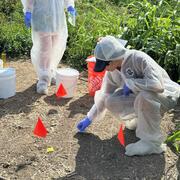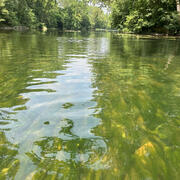Interview With GLSC’s Nicole Watson About PhD Dissertation Research at Michigan State University Featured in Article About Arctic Grayling Reintroduction
Developing More Options for Managing Invasive Plants
GLSC Studies the Effect of Pausing Sea Lamprey Control Efforts During COVID
GLSC Teaches Preschool Students About Aquatic and Terrestrial Science of the Great Lakes
GLSC Invited to Great Lakes Angler Workshop
Great Lakes Science Center
Welcome! The Great Lakes Science Center (GLSC) is part of the Midcontinent Region of the USGS, DOI Regions 3 and 5. Our scientists work in the Great Lakes region and other parts of the country to meet the nation’s need for scientific information used by resource managers to restore, enhance, manage, and protect the living resources and habitats in the Great Lakes basin.





